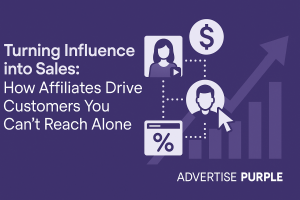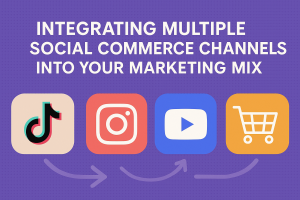
Share
You know the feeling. It’s a Tuesday after work and you’re home waiting for the water to boil on some killer pasta that you’re about to make. As entertaining as this episode of Gordon Ramsay critiquing hot wings on The Hot Ones is, you get a little antsy. So much so that you start to think, “Hmm, I really need an electric kettle so this water doesn’t take so dang long to boil.”
Then, quick as a flash of lightning, you remember that your friend was talking about this great kitchen store online. You type it into the browser on your phone and run a quick search on the site. And Bam. There it is. The #1 rated electric kettle with a digital price tag of $149.
“A little pricey,” you think. But you read the product description, watch the demo video, read the reviews, and decide it’s worth it. “I’ll get to eat my pasta so much faster, let’s do it,” you say. You press that glowing, hard-to-miss “Add to Cart” button and it all starts to feel a little more real now.
You start to thumb in your information for checkout and realize there are more steps than you thought. Just then, your Corgi squeaks his toy at your feet and it’s game over. You’ve got five-ish minutes before the water boils, so you exit your cart, put your phone down, and give all your attention to the pup.
This, my friends, is called cart abandonment and it happens a lot more often than you might think.
According to a report on shopping cart abandonment by Forrester, 88% of online shoppers say that they’ve abandoned a shopping cart without completing a transaction. Surprisingly, this is the same percentage as five years ago, which says we’ve got a lot to do to address this issue.
Why does it happen, though? Well, a couple of primary drivers for cart abandonment are frustration with shipping costs, high and unexpected extra charges, being unprepared to commit to a purchase, wanting to shop cheaper, having to register for an account, and confusing checkout processes.
I’m sure you already know that this is just no good for businesses, but let’s put it into context even more. More research by Forrester reports that shopping cart abandonment causes eCommerce brands to lose a shocking $18 billion in yearly sales revenue. I mean, wow.
You know what this means, right? Clearly, we’ve got to wage an all-out war on this pesky cart abandonment. Now, who’s with me?! But wait, before we jump right into attack mode, let’s try to equip ourselves with the know-how and some ammo to aid us in battle.
Here are a few tips on how to avoid your customers ditching their carts before purchase:
Be transparent with shipping and other costs
Sometimes as an eCommerce business owner, you can’t always waive the extra costs that come with purchases. That could result in a loss for you. But, what you can do, is be extra clear about them from the start. That way your customers won’t face unexpected and disappointing charges during checkout.
If you can’t offer free shipping and have to include extra fees, give your customers a heads up. For example, if you require a minimum purchase for your customer to get free shipping, display that in an easy-to-see place on your product pages. All it comes down to is disclosing fixed shipping or extra-cost-related info early on in their shopping experience. Last-minute surprises are no fun and a big driver of cart abandonment. So, let’s just nip that one in the bud right away.
Don’t force customers into account sign-up
We’ve all been there before. We’re shopping online and we find something we’re completely gung-ho about. We might even want it so bad that we add it to our cart and begin the checkout process. But then, there it is. To move forward with checkout, we’ve got to create a whole account. That means entering our name, email address, shipping address, and more.
If someone is purchasing one item and has to go through the tedious process of creating an account, there’s a good chance they might just say, “forget it.” So, don’t block your customers from a quick and easy shopping experience. Barriers like account registration shouldn’t be forced. Something you might consider instead is offering an option for guest checkout or signing up with social media logins. That, in turn, will help reduce abandonment and possibly increase conversions.
Simplify your checkout process
I’ve touched on this briefly in our post about driving affiliate growth in 2021, but I’ll do it again here. Expediency is a huge benefit to customers at the time of check out. If your checkout process isn’t as easy as 1, 2, 3, then your customers might feel compelled to leave their carts and go do something else. Hmm… sounds just like our pasta-making Corgi owner from my intro, doesn’t it?
Make your checkout process as easy as possible by trying to keep it within three or so steps. Reduce the number of form fields and remove any that aren’t necessary for completing a purchase. Your shoppers will appreciate being able to seamlessly checkout without having to jump through hoops.
Follow-up after a customer abandons their cart
If customers do abandon their carts, you may have a short window of time to bring them back to the checkout process. If you’re using email marketing, think about sending an email reminding your customers that they still have items in their cart.
You don’t want to do it too soon because that could yield lower conversion rates, but waiting too long is a no-go. Sending a reminder email after the first hour of cart abandonment is generally a good rule of thumb to follow.
Add a save for later option
I have to admit, I love this one. I’m the kind of person that shops while I’m doing a few other things and it’s easy to get distracted. I add something to my cart while browsing on my phone and then get pulled into something else. Sometimes, if you haven’t signed up for an account with the website, whatever was in your cart disappears just like that. Poof.
What I’ve always appreciated is the ability to go back to an item on my time. To wit, a lot of shoppers may be using their carts almost like a wishlist or place to save the things they want to buy later. Why not let them do that? Offer options that allow them to save an item for later or add it to their wishlists. That alone could inspire them to go through with a purchase when they’re ready.
—————
I was barely scraping the surface with these five, but now we’ve got a little ammunition and a lot of momentum as we take on the enemy known as shopping cart abandonment. It’s important to mention that there’s no such thing as 0% cart abandonment, but we can still fight for those conversions, am I right?





